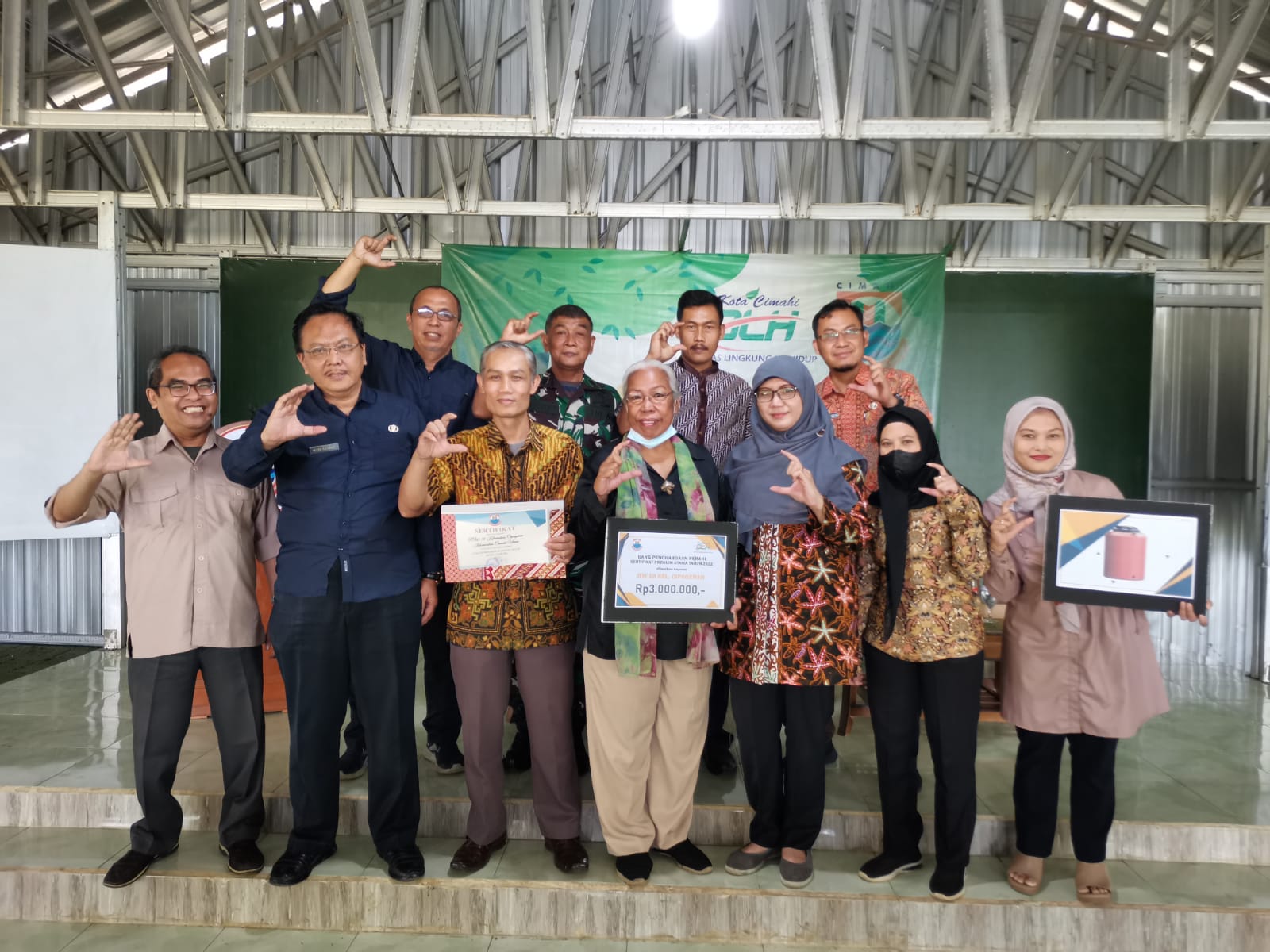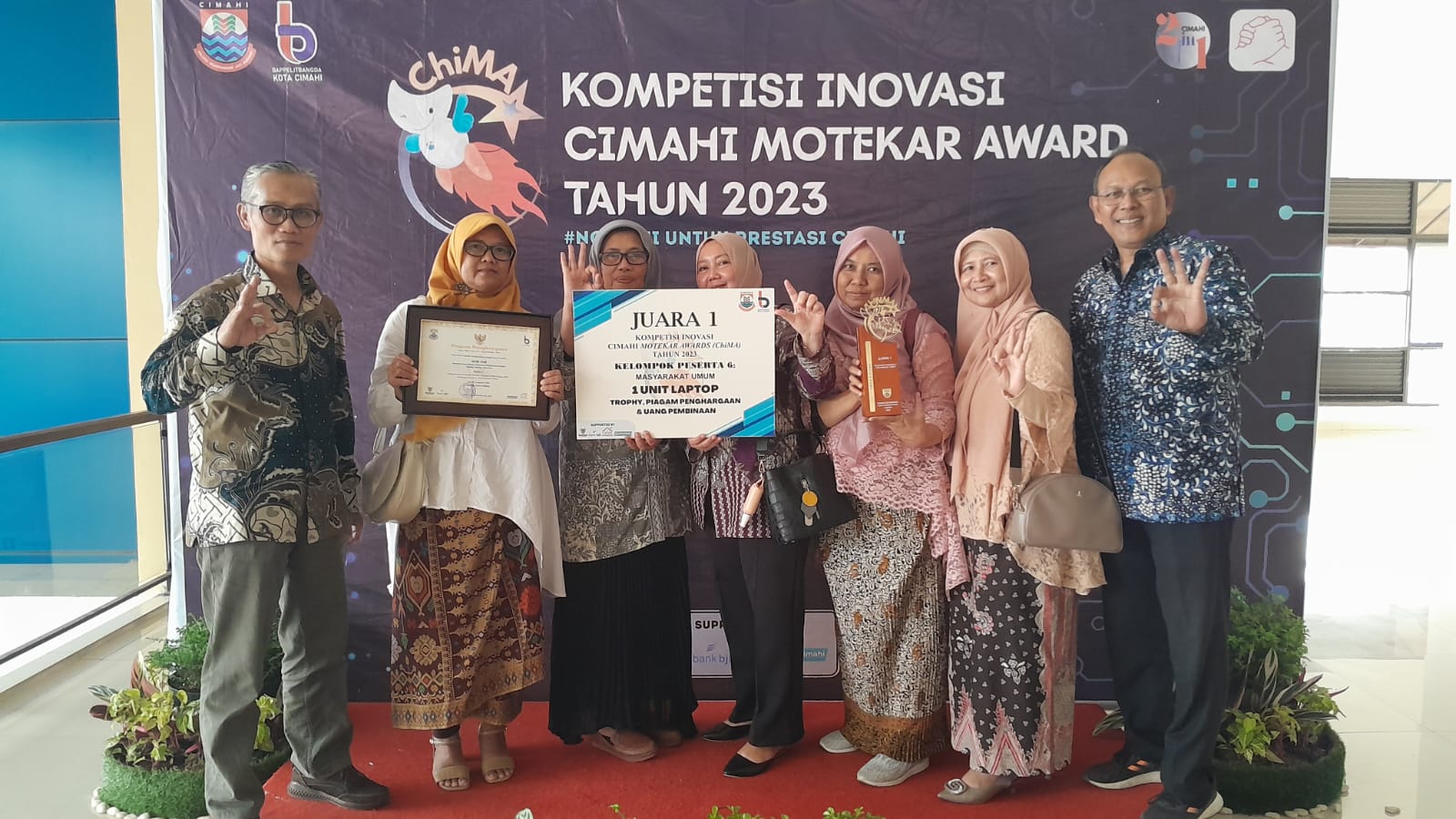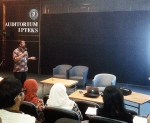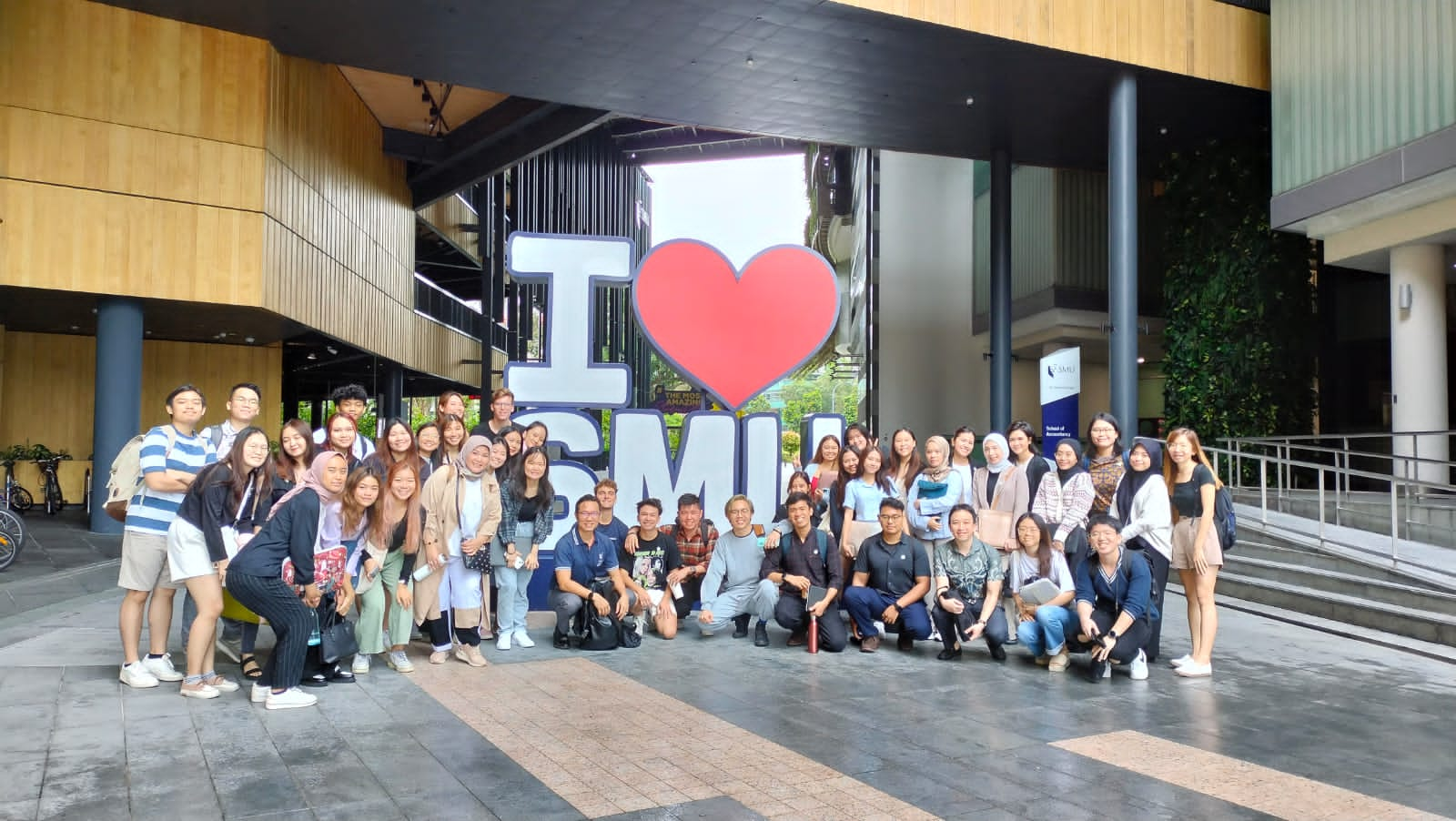Empowering Change: ITB Quality Assurance Staff Shines with Awards in Innovative Cimahi Waste Management Initiatives
By Anggun Nindita
Editor Anggun Nindita

BANDUNG, itb.ac.id - The Covid-19 outbreak that occurred in 2020 became a pandemic that changed the life of many people in the world. The virus was initially known to appear in animal and seafood markets in Wuhan City, China. It didn't take long for the outbreak to spread around the world, including Indonesia.
After being declared a pandemic, people's lives in Indonesia automatically began to change. Various activities and community activities had stopped. However, the existence of the Covid-19 pandemic is actually a story in itself for one of the administrative staffs of the Quality Assurance Unit of Institut Teknologi Bandung (SPM ITB), Asep Saepudin, S.Sos.
The pandemic turned out to be a blessing for him. He, a resident of Cipageran, North Cimahi, West Java, at that time together with the surrounding community made a productive activity in the midst of the pandemic that was not over.
"During the pandemic in 2020, many residents were affected. Some lost their jobs, some are still working but have WFH and so on. So at that time, the local residents and I gathered and thought about what activities could be done together with the residents?" he said on Wednesday (11/10/2023).
Then after gathering with the residents, it was decided that they would make a pond for catfish cultivation. At that time, the location of the catfish pond was right next to Asep's house. The plan to build the catfish pond had started in September 2020, but was only realized in January 2021.
The catfish cultivation that he did with the residents apparently developed rapidly. However, along the way, he experienced various obstacles. One of them is the matter of catfish feed.
"Initially, the catfish were fed with pellets. But after living it turns out to be heavy too, because the cost for pellets is rather heavy. Not to mention that we have to feed the catfish three times a day. One meal can be 5-7 kilograms for the pellets," he said.
Switching from Pellets to Maggot
Because he objected to the high cost of pellets, Asep and the local residents discussed finding other options for catfish feed. Long story short, Asep finally got access to carry out a dialog with the Cimahi City Environmental Agency (DLH) regarding the problem.
"After discussing with Cimahi City DLH, we were finally facilitated by using maggot for catfish feed," he said.
Maggot itself has good nutrient content compared to other alternative feed ingredients. Based on the official website of the Indonesian Ministry of Agriculture, maggot has a crude protein content of around 43%, fat around 28-30%, calcium, and other minerals."There have been many studies on maggots, one of which was conducted by the School of Life Sciences and Technology (SLST) ITB. So it is known, maggot have more protein, so the catfish produced is also healthier and fuller," he said.
Maggots: Life Cycle and Benefits
Perhaps some people are still unfamiliar with the term maggot. Maggot itself is another term for maggots, or the larvae of the Black Soldier Fly (BSF).
"Around June 2021, we finally started cultivating maggot as an option for catfish feed," he said.
Maggot itself has good nutrient content compared to other alternative feed ingredients. Asep said, maggot is an animal that does not smell fishy. So it will not cause environmental pollution due to the presence of unpleasant odors, if used as catfish feed.
"In fact, there are still many who consider catfish to be an unattractive food. Maybe it is seen from the pond or many complain that the catfish pond is smelly, dirty, and so on. That's why people don't like it," he said.
"Now when given an alternative to maggot feed, the quality of catfish becomes more guaranteed and maintained. It also does not cause odor in the catfish pond or the surrounding environment," he continued.
Not only that, who would have thought that maggot cultivation could also help solve the waste problem. As is known, since August 2023, Greater Bandung, including Cimahi, has been in a state of waste emergency.
Maggot lives by eating organic waste. Then the maggot's ability to decompose waste is fairly fast. After hatching, maggots need food to survive. This organic waste can be food for maggots.
"For the organic waste, sometimes we get it from the market or supermarket. Usually vegetables or fruits that have begun to deteriorate or are not suitable. Many are also from household waste, such as vegetable scraps or food," he said.
As an illustration, one maggot can decompose 25-500 milligrams in one day. Meanwhile, 15 thousand maggots can decompose about 1-2 kilograms of waste per day.
For Asep's efforts with GEMI 0418 in cultivating catfish using maggot feed, his party also received many appreciations and awards. Especially in the field of environmental conservation.

One of them is the Climate Village Program (ProKlim) award from the Indonesian Ministry of Environment and Forestry (KLHK) in 2022. GEMI was also appointed by Cimahi City Government as a pilot project in independent circular waste management efforts.
He hopes that what he does with GEMI can inspire young people to be more concerned about environmental issues, including waste management and the utilization of crops.
"Yes, it means that with inspiration like this, it can open up new movements from students or young people. For example, waste management through maggot. Hopefully, there will be more innovations from students and young people that have a positive impact on the environment," he concluded.
Translator: Anggi Nurdiani (Manajemen, 2021)
Editor: Vera Citra Utami

.jpg)
.jpg)
.jpg)
.jpg)
.jpg)


